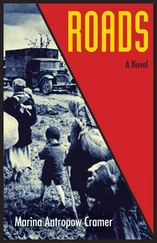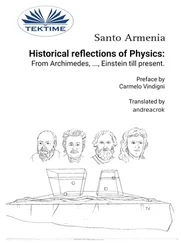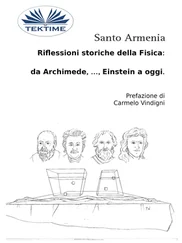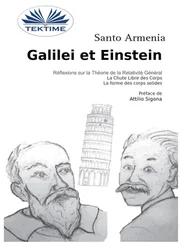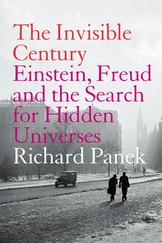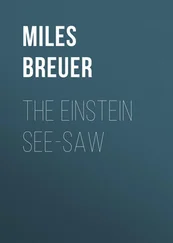“Those speckles?” said Wolfgang. “I don’t know. There seem to be clusters of them near the gate region. Perhaps they are small particles made during the gate failure, debris from the catastrophe. There must have been some energy dissipated when the semiconductors decided to rearrange themselves.”
“Perhaps so,” said George. “Can we look at some gate that didn’t fail?”
“Of course,” said Wolfgang, typing into the keyboard of the STM control computer. The scene on the display began to shift to the right as the piezoelectric needle-position mechanism was given a new bias voltage. The stratified terrain passed by until an hourglass shape appeared on the screen.
George studied it closely. “I see a few of the clusters near the gate region here, also. There are fewer of them, though, and they seem to be lined up along the gate channel, like spectators along a parade route,” he said. “Was there anything similar on the ATLAS chips?”
Wolfgang shrugged. “I don’t think so,” he said. “I think we would have noticed.”
“What’s the scale here? A few microns?” George asked.
Wolfgang typed a command, and a graduated scale appeared along the lower part of the display. “Ja, the clusters are perhaps a micron across,” he said.
George thought for a moment. He had an idea. “The superconductor metallurgy group has a scanning electron microprobe. It scans an energetic electron beam over a surface, and records the X rays produced at each spot. It can label any feature of a scan picture with its chemical composition of elements. Maybe we can schedule some time on it to find out what the clusters are.”
Wolfgang pursed his lips and nodded. “Ja, good idea.” he said.
George took out his cellphone and called Jerry Walton, the superconductor metallurgy group leader. George reserved two hours of microprobe time in the next blank spot in the schedule, Friday, June 18. It was frustrating to have to wait more than a week, but there were no openings sooner. Jerry promised to call George or Wolfgang if anyone canceled.
They spent the rest of the afternoon moving the STM probe around on the microlandscape of the detector, finding other blown FETs and clusters of speckles but learning nothing more.
At the end of the day, after a quick meal in the cafeteria, George returned to his room at the SSC hostel feeling depressed. He spent the evening watching second-rate movies on the room’s TV wallscreen.
ROGER STROKED HIS CHIN AGAIN AS HE STUDIED THE papers and diagrams on Susan’s laboratory desk. Susan was very excited about her work, and her enthusiasm had caught him up, too. And it was interesting. He thought about the implications of her neuroprotein. If it worked, it could change the world. Again he felt the dull ache in the pit of his stomach, an ache related to how badly his own work had been going lately. Her protein, when it was available, could even change theoretical physics, he thought. It could change his theoretical physics.
Susan laughed.
Roger looked up inquiringly. Had he done something amusing without realizing it?
“You always stroke your chin when you’re thinking hard,” she said. “Elvis seems to be imitating you. Perhaps he’s considering going into particle theory.”
Roger walked over and looked in at Elvis, the rhesus monkey in the laboratory cage on the cart in front of Susan. “There are some fairly odd animals in the field already,” he said. “I suppose we could accommodate one more.” He wondered if imitating humans was an indication of intelligence. He watched the movement of Elvis’s eyes, studying Roger, then flicking away. He could believe there was intelligence behind those eyes.
Roger turned to Susan and again felt the pull of her attraction. He liked her very much. After a pleasant Tuesday evening dinner at the Four Seasons in Dallas, they had driven the short distance to her laboratory at Mitocon. Susan had told him that she was concerned that the person on the evening shift had called in sick, and she had decided to give Elvis his next shot and checkup herself. Roger was pleased to finally get a look at her laboratory and at Elvis, one of her favorite topics of conversation. He had been seeing a lot of Susan in the past week and a half, but this was his first visit to her lab.
“I wonder…” he said, watching Elvis and thinking again about what Susan’s drug might do for humans. “Do you have any quantitative measure of how much this new protein has improved his intelligence?” he added lamely. He didn’t want to bring up the topic of human experimentation again. He had already heard Susan’s strict views on the subject.
She removed a felt-tipped pen from the pocket of her white lab coat and scribbled on a pad. “It’s a matter of interpretation,” she said. “I have superconducting magnetometer measurements showing a significant increase in electromagnetic brain activity after we gave him synaptine, but there’s no way, at present, to relate that to intelligence. His reactions are faster. His basic reaction time is down to about 70 percent of what it was before the treatments.”
Roger nodded and inserted a long cylindrical greenish “monkey chow” pellet into a mesh opening of Elvis’s cage. The animal snatched it to his mouth with a lightning-fast motion.
“There are also the sequence learning tests,” said Susan. “Before we started him on synaptine, it took about four repetitions before he learned a new sequence. Now he always gets them after the second repetition and often after the first. Is that a 100 percent increase in IQ? Or a 50 percent increase? Or is it nonsense to apply a one-dimensional measure like IQ to a characteristic with as many independent variables as intelligence seems to have? All I can say is that I’m sure Elvis is much brighter than he was a few weeks ago.”
Roger nodded. “How long does a dose of synaptine last? Or is it permanent?”
“The protein is metabolized, so it has to be replaced. With Elvis an intramuscular dose lasts about twelve hours. But there’s some evidence of residual benefits that last much longer. With the rats it’s more difficult to tell, because the effect is so much smaller.”
“Smaller in rats…” Roger mused, trying to recall what she had said about the tests. “Oh yes, you were doing trials with rats until a few weeks ago, weren’t you?” If the increase in intelligence is small in a rat and bigger in a monkey, what would it be for a human? he wondered.
She nodded. “That series was disappointing. Synaptine didn’t do much for rats, for some reason,” she said. “In low doses it made them meaner, and in large doses it gave them seizures, but the effect of what should be a normal dose was only a slight improvement in their T-maze running performance.”
“Any theories as to why?”
“We did some autoradiographs of brain tissues with carbon-14-laeled synaptine. The stuff is quite selective. It’s active mainly in the prefrontal brain areas of primates, and rats don’t have any prefrontal development to speak of. Probably there are different versions of the same basic molecule that operate with different types of neurons.”
Roger peered closely at Elvis again. “Any evidence of side effects with this guy?” he asked, walking around to the side of the cage. Untested experimental drugs could be dangerous, he knew.
“Nothing obvious, certainly,” Susan answered. “His weight has been a constant six kilos, his appetite is good, and his coordination, like his reaction time, has improved. Synaptine is a natural protein, if a rare one. Primates already have some quantity of it in their brain tissue, so raising the concentration wouldn’t be expected to do unpleasant things, unless the dose was very large. That’s the argument we’re using to persuade the Food and Drug Administration, so they’ll approve our application for preliminary human trials to try small doses on certain retarded children, Alzheimer’s patients, and others that show evidence of a synaptine deficiency.”
Читать дальше

